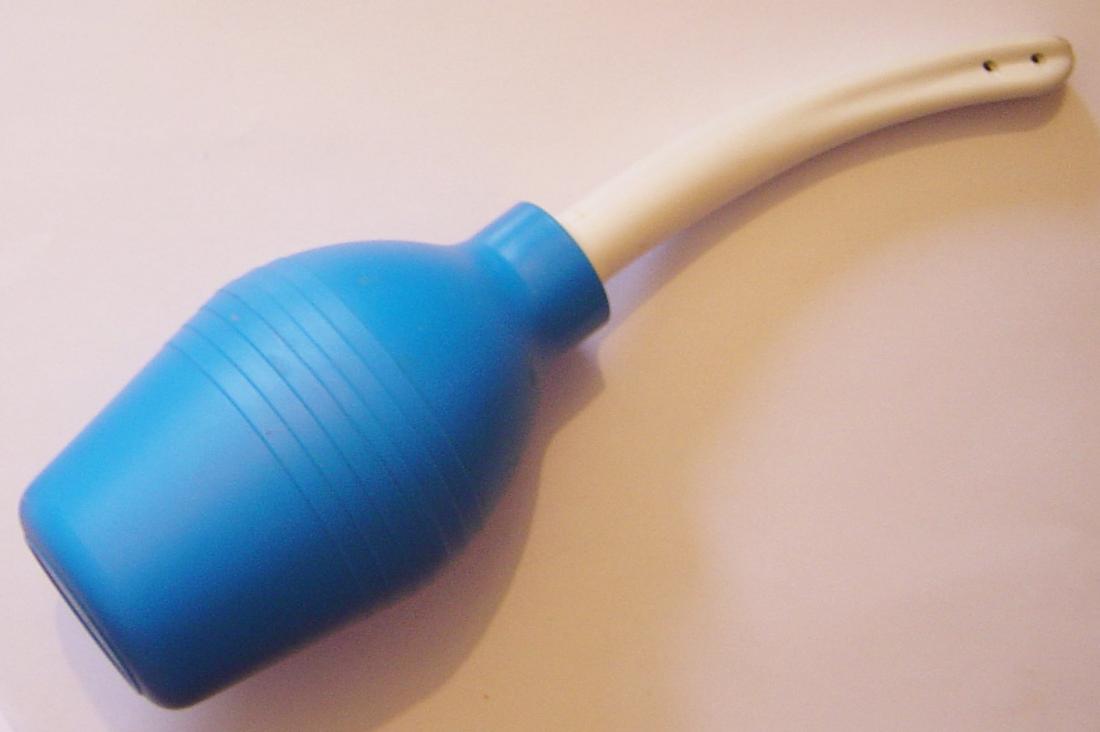
Is it ever advisable to use ‘feminine hygiene’ products?
In high school, I used to take a class called “education for health,” which was an eclectic mix of general biology and sex education rolled haphazardly into one.
As fun-loving teenagers, many of my classmates would ask questions and recount anecdotes they hoped would spook our long-suffering teacher.
One of their questions, however, genuinely piqued the interest of all the girls in the class.
Her good friend, she said, used intimate cleansers on a daily basis. Despite this, she ended up with a bad vaginal infection. “How was this possible?” my classmate wondered.
Our teacher then explained that overusing cleansers, even ones labeled as “safe” for intimate areas, could upset the delicate intimate balance of the vagina and give rise to infections; but was our teacher right or wrong in her assessment?
So-called feminine hygiene products — which include different types of intimate washes, wipes, shaving gels, and lubricants, but also intimate douches and products for alternative care procedures, such as vaginal steaming — are popular in many countries around the world.
Statistics show that the feminine hygiene market, on the whole, brought millions of dollars into the economies of dozens of countries in 2017 alone, with China and the United States leading the field.
In the U.S. in 2018, sales for vaginal treatments amounted to over $286 million, and those for douches to $41 million. Meanwhile, other types of feminine hygiene products — excluding sanitary napkins, pantyliners, and tampons — brought over $309 million into the economy.
Yet in recent years, one mantra has become pervasive across medical and wellness websites and on educational materials discussing vaginal health — namely, that “the vagina is a self-cleaning oven.”
This idea refers to the fact that the vagina naturally produces discharge that eliminates dead cells and bacteria, so there is no need to clean it using soaps, washes, or douches.
So if the vagina does not require any additional cleaning, does this mean that the same rule applies to the vulva? And how can different intimate hygiene products affect vulvovaginal health? These are some of the questions that we will tackle in this Spotlight feature.
Vulva and vagina basics
First things first: What is the vagina, what is the vulva, and what is the difference between the two? In medical terms, the vagina refers to the internal muscular tract extending from the cervix to the vaginal opening.
The vulva is the external part of the female genital tract, which includes:
- the inner and outer labia (labia minora and majora)
- the glans clitoris (the external part of the clitoris) and clitoral hood (the fold of skin protecting the glans clitoris)
- the vestibule (which surrounds the vaginal opening)
- the urethral opening
To maintain vulvar and vaginal health, a person must ensure that two important aspects remain balanced: their pH, which is a measurement that denotes something’s acidity or alkalinity, and their bacterial balance.
Studies indicate that vulvar pH is usually 3.5–4.7, while vaginal pH varies according to a person’s age and the stage of their menstrual cycle.
So, before a person reaches reproductive age and starts menstruating, their vaginal pH will be 7 (neutral), whereas a person of reproductive age may have a vaginal pH of 3.8–4.4. At menopause, depending on whether or not a person undertakes hormone replacement therapy, their vaginal pH may be 4.5–5 or 6.5–7.
When it comes to understanding what constitutes a balanced microbiome in the vagina versus the vulva, however, matters become less clear.
In the vagina, bacterial populations shift depending on the phase of the menstrual cycle and, according to some studies, people of different ethnicities also have different vaginal microbiota.
As for the vulvar microbiota, specialists have conducted only a few studies with the aim of determining what a normal vulvar bacterial population should look like. That said, existing research does suggest that the vulva naturally features bacteria present in the vagina as well as some species present in a person’s feces.
However, as one study that names these characteristics concludes, “the vulva is more complex than originally thought,” as vulvar bacterial populations appear to vary greatly among people.
Which products are unsafe?
Considering we know so little about what a healthy vulvovaginal environment should look like — in part because it can differ so much from person to person — it can be difficult to outline clear guidelines on what products someone should use when it comes to intimate hygiene.

Using douche syringes and cleansers can upset the vaginal microbiome.
However, studies looking at the connection between feminine hygiene products and the development of vaginal infections have drawn some strong conclusions as to which products and procedures a person should avoid when caring for their vagina and vulva.
Douching involves “flushing” the vagina with water or various cleansers, including homemade solutions of water and vinegar, sometimes with the help of specially designed implements. This technique is as widespread as it is unhealthful.
Several studies have found that douching can upset the natural bacterial balance in the vagina, rendering it more vulnerable to infections — including sexually transmitted infections — and increasing a person’s risk of cervical cancer and pelvic inflammatory disease.
In 2018, researchers from the University of Guelph in Ontario, Canada, concluded that the use of gel sanitizers was linked with an eightfold increase in a person’s risk of developing a yeast infection, and a nearly 20 times higher risk of getting a bacterial infection.
The same study also found an association between the use of intimate washes and a 3.5 times higher risk of bacterial infections, and a more than twofold higher risk of having a urinary tract infection (UTI). The scientists noticed a similar association between using intimate cleansing wipes and UTIs.
“These products may be preventing the growth of the healthy bacteria required to fight off infection. Our society has constructed female genitalia as unclean, and the marketing of vaginal hygiene products as something women need to attain the ideal is contributing to the problem.”
Lead study author Kieran O’Doherty
An older study in the journal Sexually Transmitted Diseases suggested that people who took bubble baths, applied antiseptic solutions to the vulva or vagina, or used store-bought or homemade solutions and washes to clean the vagina were more likely to have bacterial vaginosis.
Moisturizes and spermicides may also cause harm. According to one 2013 in vitro study, Vagisil feminine moisturizer and a spermicide (Nonoxynol-9) quickly stifled the growth of “good” bacteria (Lactobacillus) usually present in the vagina.
The researchers explain that Nonoxynol-9 “completely killed the bacteria,” while Vagisil significantly suppressed Lactobacillus growth.”
What are some good practices?
When it comes to keeping the vagina clean and healthy, guidelines from the Office on Women’s Health state that “[i]t is best to let your vagina clean itself” through the discharge it naturally produces.
If a person is worried about vaginal discharge changing color or acquiring a particular smell, they should speak to a healthcare provider to check for a potential infection.
Although many people may be concerned about vaginal odor and buy into products that claim to eliminate it, it is normal for vaginas to have a unique, musky scent.
However, if cleaning the vagina is unnecessary and even harmful, what about cleaning the vulva? Evidence regarding whether or not cleaning the vulva is helpful has often been inconclusive.
A 2017 review of specialist literature suggested that a person should regularly clean the skin of the vulva with mild, unfragranced, soap-free washes to prevent the buildup of sweat, menstrual blood, dead cells, and other biological material that could accumulate harmful bacteria.
This advice is based on various official guidelines suggesting the use of “gentle hypoallergenic liquid washes” to clean the vulva. One such set of guidelines is that which the Royal College of Obstetricians and Gynecologists issued in 2013, which say:
“Washing [the vulva] with water and soap may cause dry skin and make itching worse. Using soap substitutes can be soothing and protective, and will stop the skin from becoming as dry and irritated. Aqueous cream (a special type of moisturiser […]) can be used instead of soap.”
However, the guidelines also warn that overwashing the vulva (cleaning it more than once per day) can irritate it and harm its health, and that in cleaning this part of the body, a person should “[a]void using sponges or flannels” and only pat it gently with a soft towel to dry.
In short, the consensus among gynecologists seems to be that vaginas and vulvas are mostly fine by themselves, and that assaulting them with soaps, perfumes, creams, and gels is likely to cause more harm than good.
If you are worried about the shape, look, smell, or feel of your vulva, the best place to go is not the drug store or the internet for anecdotal advice, but to your doctor.
They will give you the correct information you need and will help you decide on the best course of action — if any action is necessary at all.

